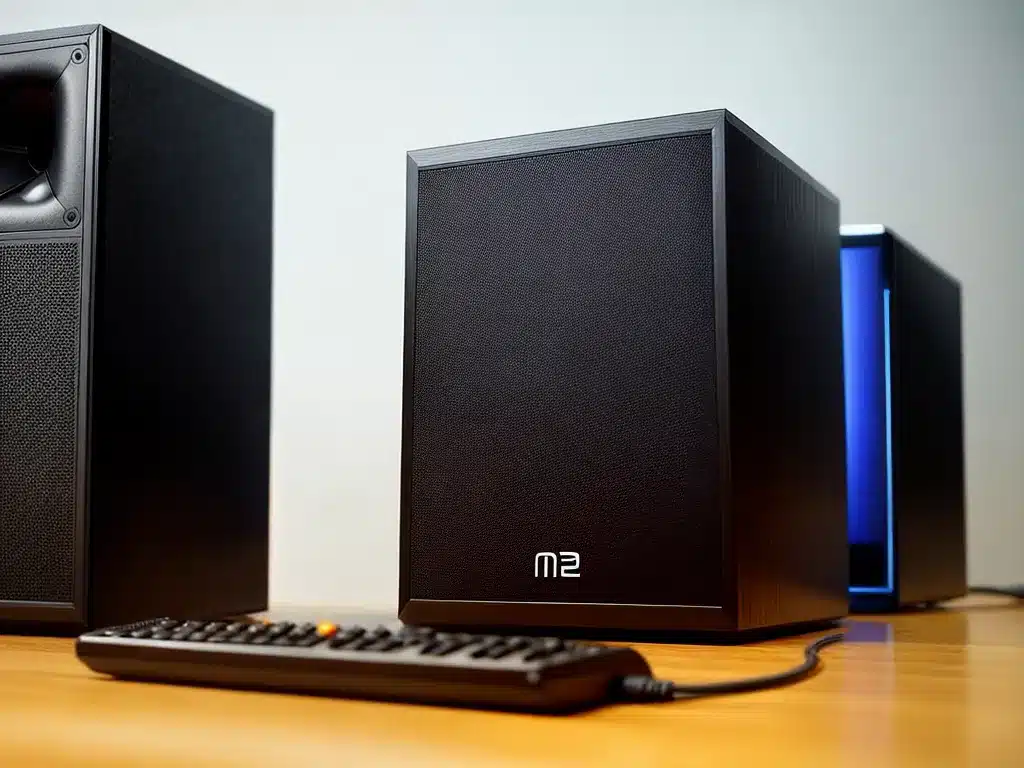Having no sound coming from your computer speakers can be incredibly frustrating. However, there are a number of potential fixes you can try to get your speakers working again. Here are the top solutions for restoring sound when your PC speakers have suddenly gone silent.
Check Your Speakers Are Turned On and Connected Properly
This may seem obvious, but it’s easy to overlook something simple. First, ensure your speakers are turned on – there should be a power light illuminated on the front if they’re switched on.
Next, check that your speakers are properly connected to your computer. The speakers will connect via either a 3.5mm headphone jack, USB, or wired directly into the motherboard audio ports.
-
If using a 3.5mm connection, make sure the cable is firmly inserted all the way into the green “line out” or “speaker out” port on the back or side of your PC. Wiggling the jack while inserted can help get a better connection.
-
For USB speakers, verify the USB plug is fully connected to a working USB port on your computer. Try using a different USB port if issues persist.
-
If wired directly to motherboard audio ports, ensure the speaker wires are securely attached and the connectors are properly oriented.
Adjust Volume, Mute Settings, and Default Playback Device
Once you’ve confirmed your speakers are turned on and connected, the next thing to check is the speaker volume,mute, and playback settings in Windows.
Open the volume mixer by clicking the speaker icon in the system tray. Make sure the speaker slider is not muted and turned up to an audible level.
Also, check that the correct playback device is set as default. Right-click the icon for your speakers and select “Set as Default Device” if needed.
Update or Reinstall Audio Drivers
Outdated, corrupt, or missing audio drivers can prevent sound from coming through your speakers properly.
You can update your audio drivers in Device Manager by right-clicking your sound device and selecting “Update driver”. This fetches the latest driver from Windows Update.
For a more thorough fix, download the latest audio driver directly from your motherboard or sound card manufacturer’s website. Uninstall the old driver first before installing the new one.
Disable Front Panel Jack Detection
Some desktop PC cases have front panel audio jacks that can cause interference when speakers are plugged into rear ports.
In Sound settings, go to the Playback tab and right-click your speakers. Select “Disable front panel jack detection” – this prevents signal crossing from front to rear ports.
Test With Alternate Speakers or Headphones
To confirm that the problem lies with your speakers rather than your PC’s audio system, test with a different set of speakers or headphones.
Plug them into the same port and see if sound comes through properly. If the new speakers work, then the issue is likely specific to your original set of speakers.
Check for Hardware Damage and Interference
Issues like a damaged speaker, frayed wiring, or electrical interference can prevent sound output even when audio signals are being transmitted properly from the PC.
Inspect your speaker set thoroughly and look for any signs of hardware damage, exposed wires, or loose connections. Also make sure speaker wires are not running too close to any power cables, which can cause interference.
If no fixes resolve your no sound issue, your speakers themselves may need repair or replacement. Contact the manufacturer for troubleshooting tips specific to your speaker model if under warranty.
Restore Windows Audio Services
As a last resort, corrupted Windows audio services can sometimes cause speaker issues. Restoring these services to default settings may resolve sound problems.
Open an elevated Command Prompt and run the following commands one by one, restarting your PC after each:
sc config Audiosrv start= auto
net start Audiosrv
sc config AudioEndpointBuilder start= auto
net start AudioEndpointBuilder
This resets the Windows Audio and Audio Endpoint Builder services that manage audio playback devices and drivers. Sound should be restored after restarting your PC.
Fixing silent speakers may require trying multiple solutions, but following these steps should help isolate and resolve the underlying problem. Let me know if you need any clarification implementing a certain fix for your no sound issue. Happy listening!













